
 Flash News
Flash News
Gunfire in Durres, a 30-year-old man is injured
Accident on Arbri Street, car goes off the road, two injured
Arrests of "Bankers Petrolium", Prosecution provides details: Exported and sold 532 billion lek of oil, caused millions of euros in damage to the state
Ndahet nga jeta tragjikisht në moshën 28-vjeçare ylli i Liverpool, Diogo Jota
Posta e mëngjesit/ Me 2 rreshta: Çfarë pati rëndësi dje në Shqipëri
From sea salt to beer, discover the most dangerous foods for our health
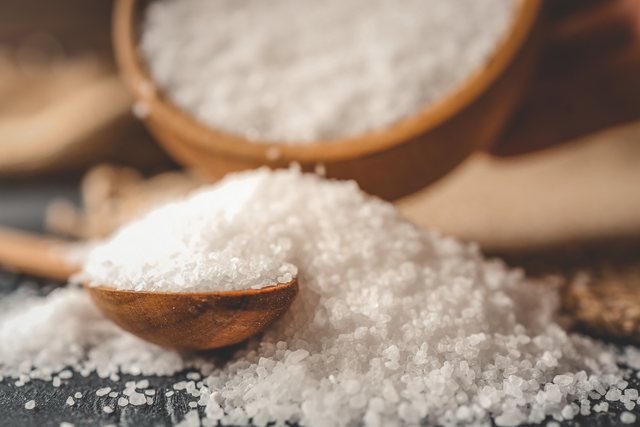
Microplastics, these tiny plastic particles, the size of which does not exceed 5 millimeters, have managed to flood the environment, including the food and drinks we consume every day.
Researchers have linked exposure to microplastics and nanoplastics to the occurrence of inflammation, immune dysregulation, and metabolic disorders.
7 foods and drinks with the highest percentage of microplastics
1. Sea salt: contains 0.4-5.8 grains per teaspoon (5 g)
Due to ocean pollution, microplastics have been found in sea salt. A 2023 study, which analyzed 13 European brands, found levels ranging from 74 to 1,155 particles per kilogram, with traditionally harvested salts containing significantly lower levels.
The most common type of plastic is polyethylene terephthalate (PET), which is used to make plastic bottles. Although the health effects remain unclear, sea salt may contribute to overall exposure.
Choose rock salt or pink Himalayan salt, which are less likely to be contaminated with modern microplastics. However, if you still choose sea salt, prefer brands with traditional harvesting methods or companies that undergo independent quality control.
2. Beer: contains from 2 to 79 particles per liter
Microplastics have been detected in various beer samples, originating either through contaminated water sources or during the brewing process. A study of 24 German beer brands found fibers, fragments, and granular material in all samples, with measurements ranging from 2 to 79 particles per liter. A similar study in PLOS ONE found microplastics in all 12 beer brands tested in the US and Canada.
3. Bottled water: contains between 325 and 10,000 particles per liter
Studies show that bottled water can contain significant amounts of microplastics, mainly from the packaging and bottling process. Bottled water samples contained an average of 325 particles per liter, with some reaching 10,000.
Prefer filtered tap water, stored in stainless steel or glass containers. Never drink water from a plastic bottle that has been exposed to the sun.
4. Shellfish: contain from 7.6 to 10.7 particles per gram (shrimp), and about 1.4 per gram (oysters)
Shellfish such as shrimp, mussels, clams and oysters are filter feeders and accumulate microplastics, which are then transferred to the consumer.
You can expand your protein sources by choosing plant-based proteins, like poultry and fish, from sources with lower pollution. Studies have shown that fish and seafood from Australia contain less microplastics.
5. Rice: contains up to 13 micrograms of plastic per 100 grams of pre-cooked (instant) rice, or 3 to 4 micrograms per 100 grams of washed rice
Rice, although seemingly “clean,” contains plastics such as polyethylene, polypropylene, and PET in 95% of samples. Instant rice contains four times more plastic than regular rice, reaching 13 micrograms per 100 grams.
Choose minimally processed rice and rinse it well before cooking. Choose organic varieties for reduced exposure to microplastics and better metabolic health.
6. Apples and carrots: up to 44.6 million particles per apple / up to 14.7 million per 150 grams of carrots
Microplastics are not limited to surfaces, but are also absorbed by plant tissues. A 2020 study found that apples and carrots had the highest concentrations, with apples leading among fruits and carrots leading among vegetables.
Choose bulk, locally grown produce. Wash fruits and vegetables thoroughly and, if possible, peel them. Choosing seasonal and organic produce reduces long-term exposure to microplastics.
7. Tea: 1 tea bag contains up to 11.6 billion particles
Some tea bags, when boiled, release billions of microplastics and nanoplastics into the drink. Choose so-called “mountain tea” or tea in biodegradable packaging.
Reducing our exposure to microplastics requires making informed decisions about the drinks and foods we consume. By choosing alternatives with a lower risk of contamination and supporting sustainable practices, we contribute to protecting our health and the environment.
Latest news



Weather forecast for today
2025-07-04 07:36:43
"Don't be afraid", here's what the stars have predicted for each sign
2025-07-04 07:21:48
Morning Post/ In 2 lines: What mattered yesterday in Albania
2025-07-04 07:03:17
Bushati: Zegjineja, a book piloted by Rama
2025-07-03 22:57:30








Greece imposes fee to visit Santorini, how many euros tourists must pay
2025-07-03 20:50:37
Don't make fun of the highlanders, Elisa!
2025-07-03 20:43:43
Gunfire in Durres, a 30-year-old man is injured
2025-07-03 20:30:52

The recount in Fier cast doubt on the integrity of the vote
2025-07-03 20:09:03




Heatwave has left at least 9 dead this week in Europe
2025-07-03 19:00:01

Oil exploitation, Bankers accused of 20-year fraud scheme
2025-07-03 18:33:52
Three drinks that make you sweat less in the summer
2025-07-03 18:19:35
What we know so far about the deaths of Diogo Jota and his brother André Silva
2025-07-03 18:01:56



Another heat wave is expected to grip Europe
2025-07-03 17:10:58

Accident on Arbri Street, car goes off the road, two injured
2025-07-03 16:45:27

Accused of two murders, England says "NO" to Ilirjan Zeqaj's extradition
2025-07-03 16:25:05





Gaza rescue teams: Israeli forces killed 25 people, 12 in shelters
2025-07-03 15:08:43
Diddy's trial ends, producer denied bail
2025-07-03 15:02:41
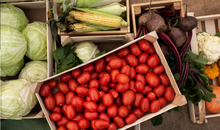
Agricultural production costs are rising rapidly, 4.8% in 2024
2025-07-03 14:55:13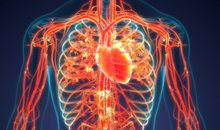
Warning signs of poor blood circulation
2025-07-03 14:49:47
Croatia recommends its citizens not to travel to Serbia
2025-07-03 14:31:19
Berisha: Albania is the blackest stain in Europe for the export of emigrants
2025-07-03 14:20:19


'Ministry of Smoke': Activists Blame Government for Wasteland Fires
2025-07-03 13:59:09

AFF message of condolences for the tragic loss of Diogo Jota and his brother
2025-07-03 13:41:36
Five healthy foods you should add to your diet
2025-07-03 13:30:19






A unique summer season, full of rhythm and rewards for Credins bank customers!
2025-07-03 12:12:20

Fire situation in the country, 29 fires reported in 24 hours
2025-07-03 12:00:04
The constitution of the Kosovo Assembly fails for the 41st time
2025-07-03 11:59:57
The gendering of politics
2025-07-03 11:48:36
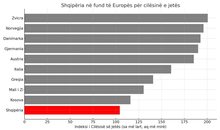
The price we pay after the "elections"
2025-07-03 11:25:39

Xhafa: The fire at the Elbasan landfill was deliberately lit to destroy evidence
2025-07-03 11:08:43

The 3 zodiac signs that will have financial growth during July
2025-07-03 10:48:01
Democratic MP talks about the incinerator, Spiropali turns off her microphone
2025-07-03 10:39:24

Ndahet nga jeta tragjikisht në moshën 28-vjeçare ylli i Liverpool, Diogo Jota
2025-07-03 10:21:03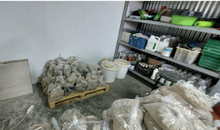
Cocaine trafficking network in Greece, including Albanians, uncovered
2025-07-03 10:10:12



Korreshi: Election manipulation began long before the voting date
2025-07-03 09:39:13
Arrest of Greek customs officer 'paralyzes' vehicle traffic at Qafë Botë
2025-07-03 09:28:41
After Tirana and Fier, the boxes are opened in Durrës today
2025-07-03 09:21:10
Enea Mihaj transfers to the USA, will play as an opponent of Messi and Uzun
2025-07-03 09:10:04

Foreign exchange, the rate at which foreign currencies are sold and bought
2025-07-03 08:53:50
Index, Albania has the worst quality of life in Europe
2025-07-03 08:48:10


Horoscope, what do the stars have in store for you today?
2025-07-03 08:17:05
Clear weather and high temperatures, here's the forecast for this Thursday
2025-07-03 08:00:37
Posta e mëngjesit/ Me 2 rreshta: Çfarë pati rëndësi dje në Shqipëri
2025-07-03 07:46:48



Lufta në Gaza/ Pse Netanyahu do vetëm një armëpushim 60-ditor, jo të përhershëm?
2025-07-02 21:56:08
US suspends some military aid to Ukraine
2025-07-02 21:40:55



Methadone shortage, users return to heroin: We steal to buy it
2025-07-02 20:57:35
